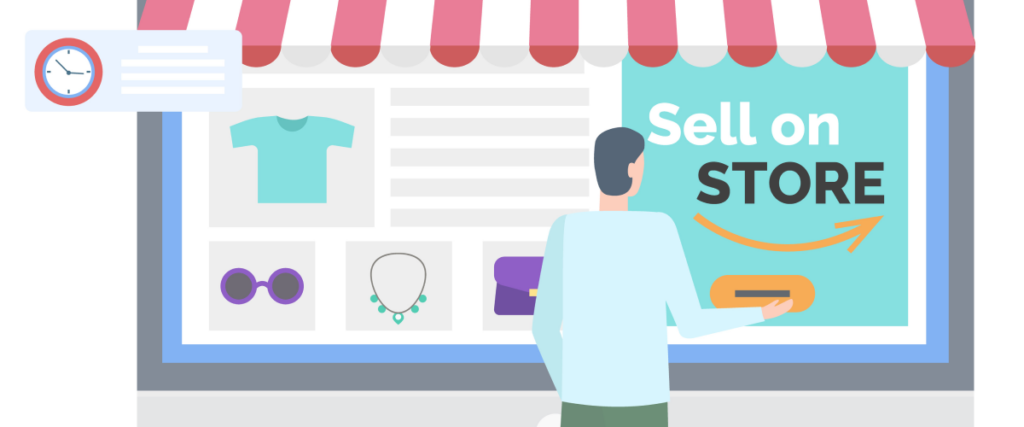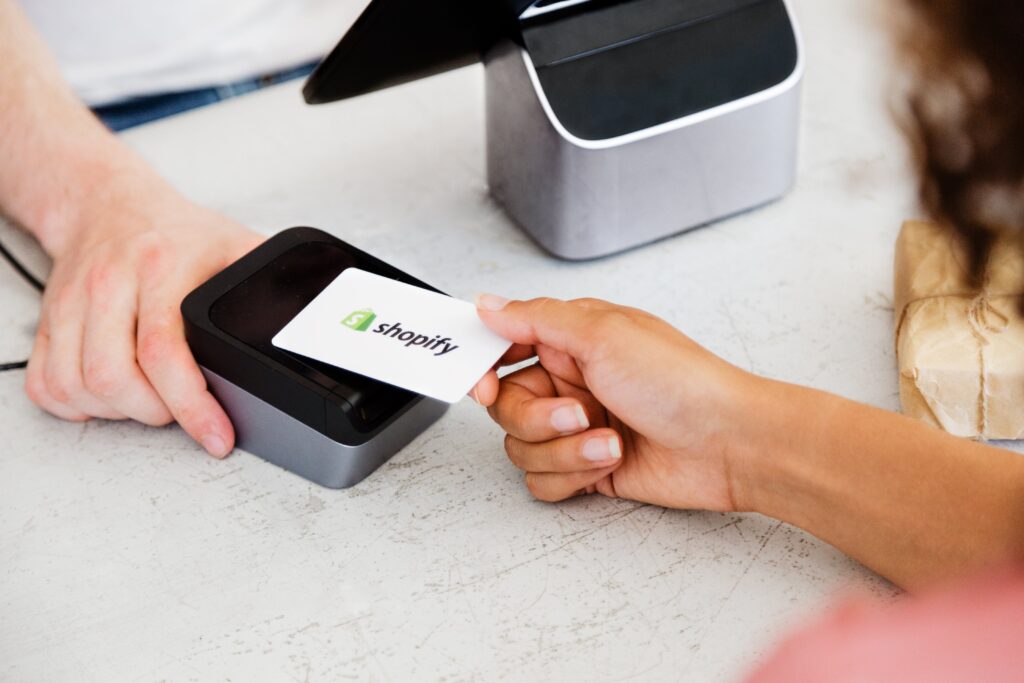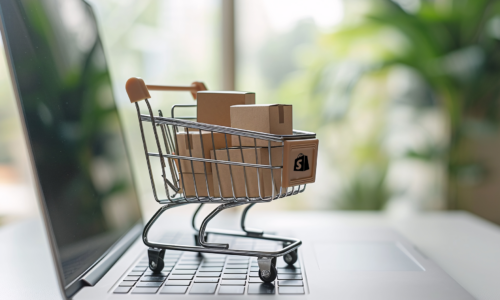O ver the last decade, retail has progressed significantly, and customers now demand an integrated online shopping experience. Consumers today no longer have to be tethered to a single device or place when they engage with brands — browsing products on their phone, exploring an in-store display, and socially engaging.
An omnichannel strategy is ideal and necessary for businesses attempting to remain competitive in this increasingly complex environment. Shopify, known for its robust eCommerce platform, offers the perfect ecosystem to create and manage an omnichannel experience.
What is Omnichannel Strategy
But first, let’s establish what constitutes an omnichannel strategy.
Omnichannel strategy: This means providing a seamless customer experience across all touchpoints—online, on social media, or in your brick-and-mortar store. Set a standard that your customers should feel the same grade of service or brand awareness when they shop through the website, on Facebook, or at your local shop.
It is also common to mistake Omnichannel for multichain; however, they are different from each other. A multichannel strategy involves selling through multiple channels, but those channels may not be connected. For example, your online store may have different inventory or prices than your physical store. Conversely, an omnichannel strategy means that all sales and customer touchpoints are linked, making the experience transparent.
Know your customer journey
So, even before you use Shopify’s numerous tools to help attract customers, map out your customer journey across many channels. To employ an efficient omnichannel strategy with Shopify, you should understand how your customers interact with your brand across multiple channels. The customer journey is business-specific and varies depending on your vertical / target market and sales channels.
Once you learn how your customers interact through the sales funnel, it becomes easier to create an integrated experience across all channels. For instance, if you learn that your customers usually find out about your brand via social media but favor purchasing in-store over online shopping, make sure to focus on both channels and align them together.
Put Shopify POS to Use for Blended In-Store and Online
For those of you with a brick & mortar, Shopify has an incredibly robust Point of Sale (POS) system. It brings your online and offline operations together. This includes sync of inventory, sales, and customer data, allowing services like “buy online pick up in-store” or “browse in-store ship to home.” From your customer’s perspective, it is all one brand experience regardless of the channel.
Key Benefits of Shopify POS:
Inventory Management: Shopify POS keeps inventory always up-to-date, regardless of whether a customer buys an item online or in-store. With this feature in place, you should never oversell, and customers can see the real-time availability of products.
In-store Customer Profiles with Purchase History: Shopify POS allows staff to easily access detailed customer profiles, including purchasing history and preferences. This allows tailored suggestions so that shoppers obtain exactly what they are looking for while feeling special both online and in-store.
More Fulfillment Options: Branch out into “buy online, pick up in-store” (BOPIS), ‘ship from store’ or ‘reserve in-store,’ etc., with Shopify POS features that all sync seamlessly. One of the reasons this resonates with customers is that having more and owning it gives them the power to, for instance, research products online before they trot out to a physical store to pay up.
Unify Your Sales Channels
With Shopify, you can sell on multiple online channels, such as your website, Facebook, and Instagram Shops. You can also control inventory, pricing, and orders for all these platforms from one place through the Shopify dashboard. This provides a seamless experience so your customers can view the same product details, prices, and promotions from anywhere in the world or on any channel!
Beyond social media, Shopify allows you to integrate with major online marketplaces like Amazon, eBay, and Walmart. These platforms have millions of active users; tapping into these audiences can significantly boost sales.

Utilizing Shopify Flow for Automation
Omnichannel operations are complex. Shopify Flow is an event-based feature that lets you create automated workflows. These automations help eliminate manual work, reduce errors, and free up time to focus on higher-level tasks like marketing and strategy.
For example, you can set up workflows to:
- Automatically notify staff when inventory falls below a certain threshold.
- Tag and segment customers based on their buying behavior (e.g., first-time buyers, repeat customers).
- Trigger personalized email campaigns when customers abandon their cart or complete a purchase.
Automation ensures that every part of your omnichannel strategy is working together. Whether it’s updating stock levels across platforms or sending personalized communications based on customer behavior, Shopify Flow keeps your channels synchronized without manual intervention.
Concentrate on Branding and Messaging Consistency
It is crucial to keep your branding consistent at every touchpoint — from when the customer receives an email, reads a social post or goes on your website. Shopify integrates with key marketing automation tools like Klaviyo, Mailchimp, and HubSpot to create consistent branding via email & SMS campaigns in harmony.
You reinforce brand trust and recognition by maintaining the same voice, tone, and design elements across channels. Even small things, like matching your website’s color palette with your Instagram feed, make a difference.
Optimize for Mobile
Shopping on mobile is no longer a trend. Over the last year, it’s estimated that 56% of all online sales came from a mobile device—a number that has increased yearly since smartphones were invented. Your Shopify store needs to be well-optimized for mobile shopping so you can provide a consistent omnichannel experience.
Not all mobile shopping ends when customers leave your store. You can send push notifications or use SMS marketing to reach a customer directly on their phone. With an app like Shopify Ping, you can chat with customers in real-time using Facebook Messenger or Apple Business Chat and deliver personalized support wherever they are. Provide payment and fulfillment choices.
Offer Flexible Payment and Fulfillment Options
Omnichannel strategies are all about flexibility. Shopify can connect to more than 100 payment gateways—from credit cards like Visa and Mastercard to digital wallets like Apple Pay, Google Pay, or Amazon Pay. Cryptocurrency payments can even be configured if desired. Shopify also integrates with “buy now, pay later” solutions via Klarna, Afterpay, and Affirm.
Providing the customer with multiple payment options will enhance their buying experience and lower friction at checkout. For example, if a customer is paying in installments, they might be more likely to complete their purchase if that option is offered.

Analyze and Iterate
Finally, the key to a successful omnichannel strategy is constant optimization. With built-in analytics, including integration with Google Analytics and Facebook Insights, you can clearly understand your customer behavior on the Shopify website.
Use Shopify’s built-in reports to track key metrics like:
- Sales by Channel: Identify which sales channels are performing best, whether it’s your online store, social media, or in-store sales.
- Customer Behavior: Monitor how customers move through your sales funnel and identify areas for improvement.
- Inventory Management: Track stock levels across channels to ensure you’re never over- or under-stocked.
Conclusion
An omnichannel strategy can help you unify the experience and make it hassle-free for your customers. Thanks to Shopify’s full suite of tools – from POS systems to Shopify Flow — setting a strategy like this in motion is easier than ever. Your goal should be to provide a seamless touchpoint where you remain focused on the customer journey and integrate your sales channels, testing that all of these paths can consistently offer an experience for those interacting at any point throughout this story arc.
This will not only build customer loyalty but also help you stay ahead of the competition and align your business with how the vast majority of customers shop today.



